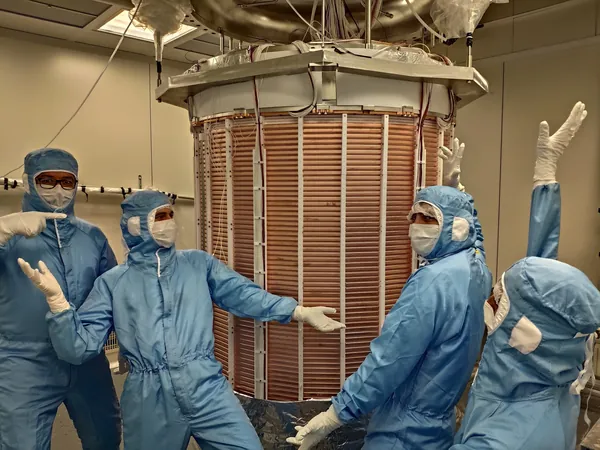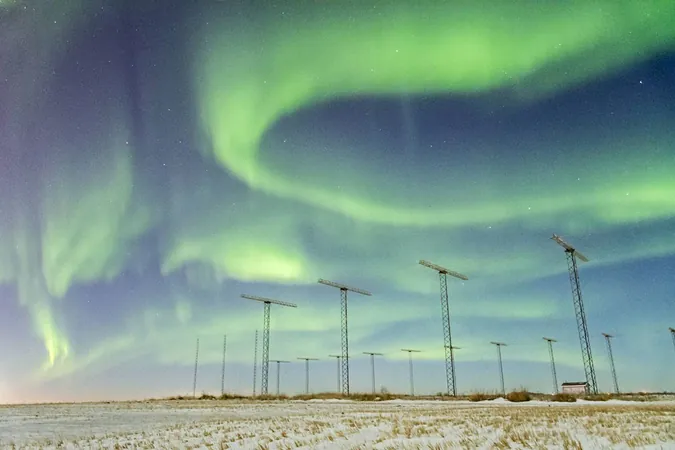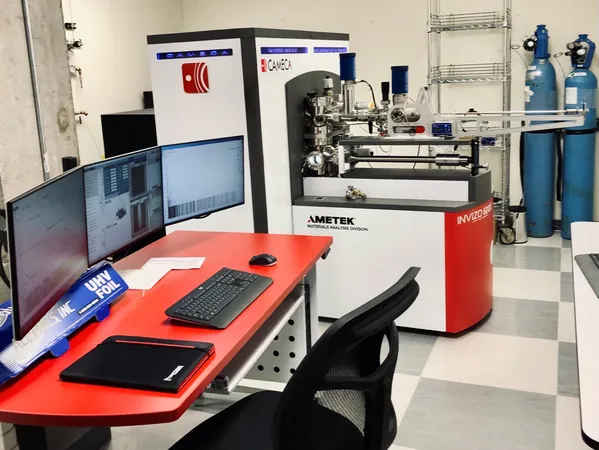
Is the Search for Dark Matter Facing a New Challenge? Discover the 'Neutrino Fog'!
2024-11-12
Author: Emma
Introduction
In the complex and elusive quest to uncover dark matter, researchers have stumbled upon a potential new obstacle: an intriguing phenomenon dubbed 'neutrino fog.' This fog consists of solar neutrinos—nearly undetectable particles—from our sun that could complicate efforts to identify dark matter, which is believed to constitute approximately 27% of the universe's mass-energy.
Understanding Dark Matter
Dark matter is a theoretical component of our universe, posited to explain the rotation of galaxies and other cosmic behaviors, and is primarily suspected to be composed of weakly interacting massive particles, or WIMPs. Currently, scientists employ various cutting-edge experiments to detect these enigmatic particles, with one popular method involving deep underground containers filled with a liquid metal such as xenon. Here, researchers hope that dark matter particles might interact with the xenon, avoiding interference from cosmic rays in the Earth's atmosphere.
The Challenge of Neutrino Fog
However, this noble pursuit faces a challenge from neutrinos: tiny particles produced in the sun's core during nuclear fusion reactions. Although most solar neutrinos can pass through Earth undetected, a tiny fraction can interact with matter. As detectors become increasingly sensitive, this 'neutrino fog' could cloud the search for dark matter, diminishing the likelihood of their detection.
Recent Findings
Recent findings from two significant underground experiments—the PandaX-4T located in China's Jinping Underground Laboratory and the XENONnT experiment at Italy's Gran Sasso National Laboratory—suggest that neutrino interactions are indeed occurring within their facilities. Both experiments published their findings in the prestigious journal Physical Review Letters, signaling the complexities posed by these interactions.
The Technical Details
While their results exhibited strong signals, they still fell short of the stringent three-sigma (3σ) significance level often required for scientific evidence. PandaX-4T, deeper beneath the surface than XENONnT, reported interactions related to neutrinos, indicating the presence of interactions from scattered neutrinos. Notably, the capture of these interactions hinges on the novel process known as coherent elastic neutrino nucleus scattering (CEνNS), discovered in 2017. CEνNS allows neutrinos to scatter off entire nuclei instead of individual nucleons, producing faint signals that are exceedingly hard to differentiate from background noise.
Observations and Future Directions
Intriguingly, the two projects intersect with a consistent observation of solar neutrino flux, roughly aligning with what astrophysicists expect from standard solar models: around 50 billion neutrinos per square meter per second. The persistence of this 'neutrino fog' indicates that as the search for dark matter continues, scientists may need to refine their techniques to isolate signals of interest amid the obscuring effects of neutrinos.
Conclusion
As research progresses, both collaborative teams remain optimistic. The PandaX Collaboration stated that ongoing data collection and future advancements could significantly enhance revisions to neutrino measurements, opening new avenues in underground science. The XENON Collaboration echoed similar sentiments, hoping for more precise future measurements that might eventually surpass the 3-sigma threshold needed to affirm their findings.
In summary, while the identification of dark matter is already a formidable challenge, researchers now face additional complications from the unyielding presence of solar neutrinos. The emergence of this 'neutrino fog' serves as a reminder of the universe's complexity and the need for continued innovation in experimental physics. Can scientists navigate this murky terrain to reveal the dark secrets of the universe? Only time and perseverance will tell!









 Brasil (PT)
Brasil (PT)
 Canada (EN)
Canada (EN)
 Chile (ES)
Chile (ES)
 España (ES)
España (ES)
 France (FR)
France (FR)
 Hong Kong (EN)
Hong Kong (EN)
 Italia (IT)
Italia (IT)
 日本 (JA)
日本 (JA)
 Magyarország (HU)
Magyarország (HU)
 Norge (NO)
Norge (NO)
 Polska (PL)
Polska (PL)
 Schweiz (DE)
Schweiz (DE)
 Singapore (EN)
Singapore (EN)
 Sverige (SV)
Sverige (SV)
 Suomi (FI)
Suomi (FI)
 Türkiye (TR)
Türkiye (TR)